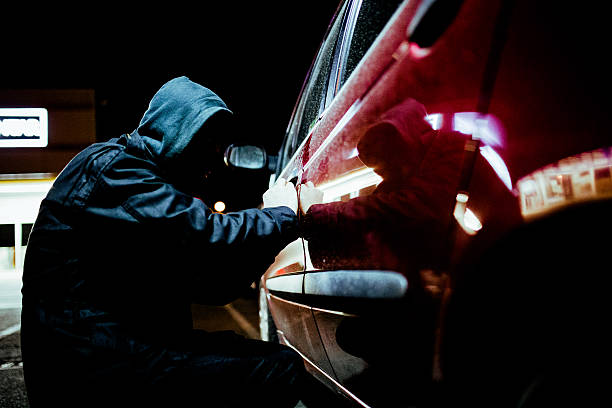From Misdemeanor to Felony: Understanding Vandalism Charges in California

Legal Implications of Vandalism Charges in California
Understanding California law vandalism charges is crucial. Vandalism, under California Penal Code Section 594 PC, involves malicously defacing, damaging, or destroying someone else’s property. It’s not just about graffiti; it includes any intentional act that harms or mars property.
Key Points:
- Maliciously defacing or destroying property without consent.
- Damage value under $400 results in misdemeanor charges.
- Damage value over $400 can lead to either misdemeanor or felony charges, known as “wobblers.”
Vandalism under California law is more than mere mischief—it’s a serious offense that carries significant penalties. Depending on the extent of the damage, penalties range from minor fines to severe jail time. For instance, causing damages of $400 or more can see you facing felony charges, highlighting the gravity with which the law treats property offenses.
As Adam Jackson, a seasoned Criminal Defense Attorney, I have dedicated my career to helping clients steer these complex laws. With deep knowledge in defending California law vandalism charges, I can assist you in understanding your rights and options.

Stay tuned to learn more about what constitutes vandalism, potential defenses, and the penalties you may face.
What Constitutes Vandalism in California?
Vandalism in California is more than just graffiti or broken windows. According to California Penal Code Section 594 PC, vandalism involves the malicious defacement, damage, or destruction of property that does not belong to you. Let’s break down what this means.
Definition and Elements of the Crime
To prove vandalism, prosecutors must demonstrate three key elements:
- Malicious Intent: The defendant acted intentionally to deface, damage, or destroy property.
- Property Damage: The property was visibly harmed, whether through graffiti, breaking, or another form of destruction.
- Ownership: The defendant did not own the property nor had the owner’s consent to alter it.
Malicious intent means the defendant did something wrong on purpose, or with the intent to annoy or harm someone else.
Property Damage and Graffiti
Under California law, graffiti isn’t just spray paint on a wall. It includes any unauthorized inscription, word, figure, mark, or design written, marked, etched, scratched, drawn, or painted on real or personal property. This means that even writing on glass with a removable black marker can be considered vandalism.
Real-Life Examples
Consider these scenarios:
- Joint Ownership: A man smashes the windshield of a car he co-owns with his wife during a heated argument. He can still be charged with vandalism because the property is jointly owned.
- Accidental Damage: A man crashes into a house while driving under the influence. Although he caused significant damage, he wouldn’t face vandalism charges because the act wasn’t intentional.
Malicious Intent
Malicious intent is crucial for a vandalism charge. If the damage was accidental or due to negligence, it’s not vandalism. For example, if someone trips and falls into a glass door, breaking it, they wouldn’t be charged with vandalism because there was no malicious intent.
Related Offenses
Vandalism often overlaps with other crimes like:
- Trespassing
- Burglary
- Damaging Phone or Electrical Lines
Understanding these elements can help you better grasp the seriousness of California law vandalism chargesand why consult a knowledgeable attorney if you’re facing such allegations.
Stay tuned to learn more about misdemeanor vs. felony vandalism, potential defenses, and the penalties you may face.
Misdemeanor vs. Felony Vandalism
Understanding the difference between misdemeanor and felony vandalism under California law is crucial. The distinction usually boils down to the value of the damage caused.
Damage Value
- Less than $400: If the total damage is less than $400, the act is typically charged as a misdemeanor.
- $400 or more: When the damage reaches $400 or more, vandalism becomes a wobbler offense. This means it can be charged as either a misdemeanor or a felony, depending on the case specifics and your criminal history.
Misdemeanor Penalties
If convicted of misdemeanor vandalism, you could face:
- Up to one year in county jail
- Fines up to $1,000 (or up to $5,000 if you have a prior conviction)
- Informal probation, which might include:
- Driver’s license suspension (up to two years)
- Counseling
- Community service, like cleaning graffiti
Felony Penalties
For felony vandalism, penalties are more severe:
- Up to three years in state prison
- Higher fines
- Formal probation, which could include similar conditions to misdemeanor probation but under stricter supervision
Wobbler Offenses
A wobbler offense gives prosecutors the discretion to charge vandalism as either a misdemeanor or a felony. Factors influencing this decision include:
- The circumstances of the case: Was the act particularly malicious or damaging?
- Your criminal history: Prior convictions can push the charge towards a felony.
Example Case
Imagine Arthur, who breaks Ray’s windshield ($150 damage) and Ray’s cell phone ($350 damage). Individually, each act is worth less than $400. But combined, the damage totals $500. Prosecutors could charge Arthur with felony vandalism due to the cumulative damage.
Important Note
Even if charged with felony vandalism, you might not be convicted of it. A jury might decide the damage doesn’t add up to $400 or more, leading to a misdemeanor conviction instead.
Understanding these distinctions can help you steer the complex landscape of California law vandalism charges. Next, we’ll explore potential defenses against these charges.

Legal Defenses Against Vandalism Charges
Facing vandalism charges can be daunting, but there are several defenses that might help you avoid a conviction. Let’s explore some key defenses:
Accident
Accidents happen. If you unintentionally damaged someone else’s property, you might be able to argue that it was an accident. For example, if you were moving furniture and accidentally scratched a neighbor’s car, this lack of malicious intent could be a strong defense.
Key Point: To be guilty of vandalism under California law, the act must be done “maliciously.” Accidental damage doesn’t meet this criterion.
False Accusations
Sometimes, people are falsely accused of crimes they didn’t commit. If someone has a personal vendetta against you, they might blame you for vandalism to get you in trouble. In such cases, it’s crucial to gather evidence that supports your innocence.
Example: Imagine someone accuses you of keying their car, but you have an alibi showing you were at work during the incident. This evidence could help prove your innocence.
Key Point: False accusations require a solid defense strategy, often involving witness testimonies, alibis, and other evidence.
Mistaken Identity
Mistaken identity is another common defense. If someone else committed the vandalism and you were wrongly identified, proving this mistake can lead to a dismissal of charges.
Example: You were at a party, and someone vandalized a nearby building. Several people saw you at the party the whole time, providing you with a strong alibi.
Key Point: Eyewitnesses can be wrong. Surveillance footage, receipts, and other evidence can help establish where you were at the time of the alleged vandalism.
Legal Representation
Having a skilled attorney on your side can make a significant difference. Legal experts can scrutinize the evidence, question the prosecution’s case, and present a robust defense on your behalf.
Example: Michael Kraut, a former Deputy District Attorney, has experience in handling vandalism cases. His early intervention often results in reduced or dismissed charges.
Key Point: An experienced attorney knows how to steer the legal system, find weaknesses in the prosecution’s case, and advocate effectively for you.
Conclusion
Understanding and utilizing these defenses can greatly impact the outcome of your case. If you’re facing California law vandalism charges, consulting with a knowledgeable attorney is crucial. For expert legal representation, contact Inland Empire Criminal Defense.
Penalties for Vandalism in California
When it comes to California law vandalism charges, the penalties can vary widely based on the severity of the damage and the circumstances of the crime. Let’s break down the potential consequences you could face.
Fines
Fines for vandalism can be hefty. For misdemeanor vandalism, if the damage is less than $400, you could be fined up to $1,000. If the damage exceeds $400, the fine can go up to $10,000. In severe cases where the damage is over $10,000, fines can exceed $50,000.
Jail Time
Jail time is another serious consequence of vandalism. For a misdemeanor charge, you could spend up to one yearin county jail. If the charge is liftd to a felony, the jail time could extend to multiple years in state prison.
Probation
Probation can be an alternative to jail time or an additional penalty. During probation, you must adhere to certain conditions set by the court. Violating these conditions can result in additional penalties, including jail time.
Community Service
Community service is often a part of the punishment for vandalism, especially for graffiti offenses. Courts may require you to clean up the graffiti not only that you created but also graffiti by others in the same area. This can last for a set period, often up to 480 hours.
Driver’s License Suspension
A less obvious but impactful penalty is the suspension of your driver’s license. The court can suspend your license for up to two years. If you don’t have a license yet, the court can delay issuing it for one to three years.
Special Cases
Certain acts of vandalism come with additional penalties. For example, vandalizing a place of worship can be charged as a hate crime, leading to harsher consequences. Similarly, vandalism done at the direction of or benefiting a street gang can result in severe legal repercussions, including additional years in prison and a strike against your record under California’s Three Strikes Law.
Understanding these penalties is crucial if you or someone you know is facing California law vandalism charges. For expert legal representation, contact Inland Empire Criminal Defense.
Next, we’ll dig into Special Cases of Vandalism and explore the unique legal considerations for specific types of vandalism.
Special Cases of Vandalism
Vandalism at Places of Worship
Vandalizing places of worship like churches, synagogues, mosques, and temples is treated very seriously in California. Under Penal Code 594.3 PC, this type of vandalism can be either a misdemeanor or a felony.
Misdemeanor Penalties:
- Up to 1 year in county jail
- Maximum $1,000 fine
Felony Penalties:
- 16 months, 2 years, or 3 years in county jail
- Maximum $10,000 fine
If the act is motivated by hate (e.g., targeting someone based on their religion), it automatically becomes a felony with harsher penalties.
Vandalism Involving Caustic Chemicals
Using caustic chemicals like butyric acid for vandalism is particularly dangerous and is classified as a “wobbler” offense under Penal Code 594.4 PC. This means it can be charged as either a misdemeanor or a felony, depending on the severity.
Misdemeanor Penalties:
- Up to 6 months in county jail
- Fines ranging from $1,000 to $50,000, depending on the damage
Felony Penalties:
- 16 months, 2 years, or 3 years in county jail
- Fines ranging from $1,000 to $50,000
Vandalism on Highways and Freeways
Vandalism on or near highways and freeways is covered by Penal Code 640.7 and 640.8 PC. This includes damaging signs, guardrails, and other structures within 100 feet of these areas.
First Conviction (Highway):
- Up to 6 months in county jail
- Maximum $1,000 fine
Subsequent Convictions or Freeway Vandalism:
- Up to 1 year in county jail
- Maximum $5,000 fine
Graffiti-Specific Laws
Graffiti is one of the most common forms of vandalism and has its own set of laws. According to Penal Code 594 PC, graffiti vandalism penalties are determined by the amount of damage.
Damage Less Than $400:
- Up to 1 year in county jail
- Maximum $1,000 fine
Damage $400 or More:
- Up to 1 year in county jail or 16 months, 2 years, or 3 years in state prison
- Fines up to $50,000
Graffiti cleanup and community service may also be ordered as part of the sentence.
For expert legal representation or more information on California law vandalism charges, contact Inland Empire Criminal Defense.
Next, we’ll answer some Frequently Asked Questions about California Law Vandalism Charges.
Frequently Asked Questions about California Law Vandalism Charges
What is the punishment for vandalism in California?
The punishment for vandalism in California depends on the value of the damaged property and whether the charges are classified as a misdemeanor or felony.
Misdemeanor Vandalism:
- Damage less than $400: Up to 1 year in county jail and/or a fine up to $1,000.
- Damage $400 or more: Up to 1 year in county jail and/or a fine up to $10,000.
Felony Vandalism:
- Damage $400 or more: 16 months, 2 years, or 3 years in state prison and/or fines up to $50,000.
Additional penalties can include community service, probation, and driver’s license suspension.
How do you prove vandalism in California?
To prove vandalism under California law, the prosecution must establish three key elements:
Intention: The act must be done maliciously. This means the defendant intentionally committed a wrongful act or acted with the intent to annoy or injure someone else.
Damage: The property must be defaced, damaged, or destroyed. The extent of the damage will influence whether the charge is a misdemeanor or felony.
Ownership: The property must not belong to the defendant alone. This can include public property or property owned jointly with someone else.
What are the different types of vandalism?
Vandalism can take many forms. Here are some common examples:
- Graffiti: Unauthorized writing, drawing, or marking on property using any tool.
- Trash Dumping: Illegally leaving garbage or waste on someone else’s property.
- Light Smashing: Breaking or damaging light fixtures, whether on private or public property.
- Breaking Windows: Shattering windows intentionally without the owner’s consent.
These acts can carry serious consequences, especially if the damage is significant or if the defendant has prior convictions.
For more information or legal assistance with California law vandalism charges, contact Inland Empire Criminal Defense.
Next, we will discuss Legal Defenses Against Vandalism Charges.
Conclusion
Understanding California law vandalism charges is crucial because the penalties can be severe, especially for repeat offenders. Vandalism can range from minor graffiti to significant property damage, and the consequences vary accordingly. Whether facing misdemeanor or felony charges, it’s essential to know your rights and the potential penalties.
At Inland Empire Criminal Defense, we specialize in defending clients against vandalism charges. Our experienced attorneys are committed to protecting your rights and providing the best possible defense. We understand the complexities of vandalism laws and will work tirelessly to achieve a favorable outcome for your case.
If you or a loved one is facing vandalism charges, don’t wait. Contact Inland Empire Criminal Defense for a free consultation. Visit our website to learn more about how we can help you steer the legal system and defend your rights.
For more information on California law vandalism charges or other legal defenses, stay tuned to our blog and reach out to our team for personalized legal advice.
Frequently Asked Questions
Absolutely, Inland Empire Criminal Defense prioritizes your privacy and confidentiality. Every consultation with our attorney is conducted with the utmost discretion, ensuring your information remains secure and private.
Yes, understanding the financial pressures that can come with legal representation, our attorney offers flexible payment plans. This approach ensures that quality legal defense is accessible for all our clients in Riverside, San Bernardino, and Los Angeles Counties.
Yes, Inland Empire Criminal Defense offers free consultations. This is part of our commitment to providing accessible and transparent legal services to residents of Riverside, San Bernardino, and Los Angeles Counties.
We offer both in-person and over-the-phone consultations to accommodate your preferences and needs. Whether you’re in Riverside, San Bernardino, or Los Angeles County, we ensure that you can access our legal services in the way that suits you best.
Our office is typically closed on weekends. However, we do make exceptions for meetings by special arrangement. Our commitment is to be as accommodating as possible to meet the unique needs of our clients in Riverside, San Bernardino, and Los Angeles Counties.
Our legal services are specifically tailored to residents of Riverside, San Bernardino, and Los Angeles Counties. For cases outside these areas, we recommend consulting avvo.com to find appropriate legal assistance. Our focused approach allows us to provide specialized defense catering to the unique legal landscape of these counties.


